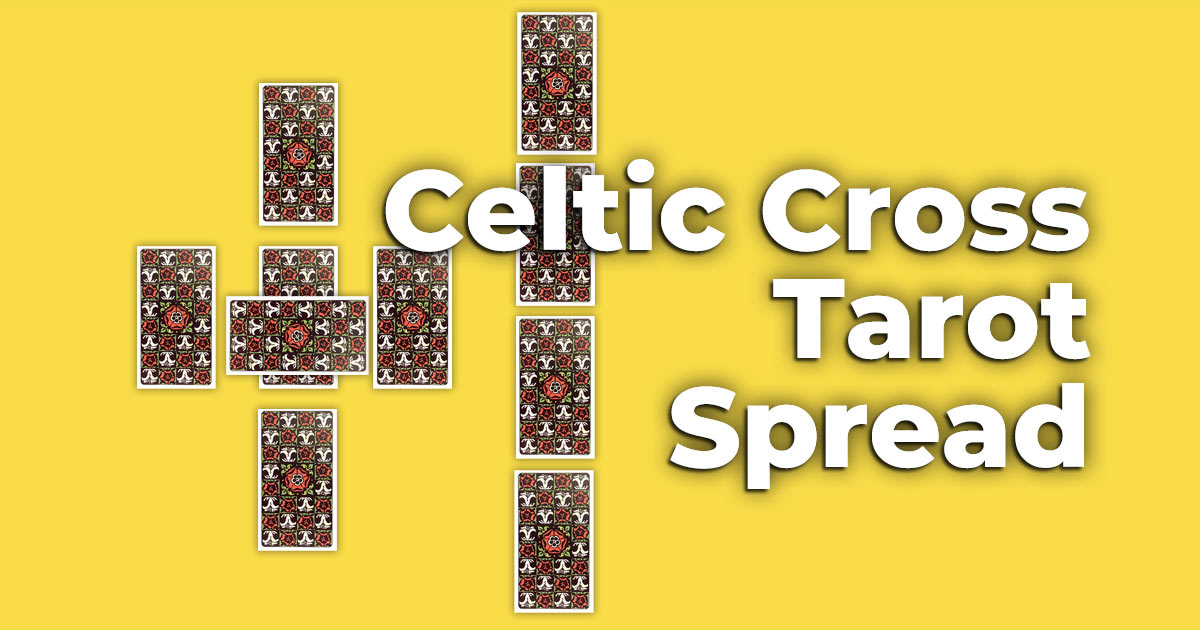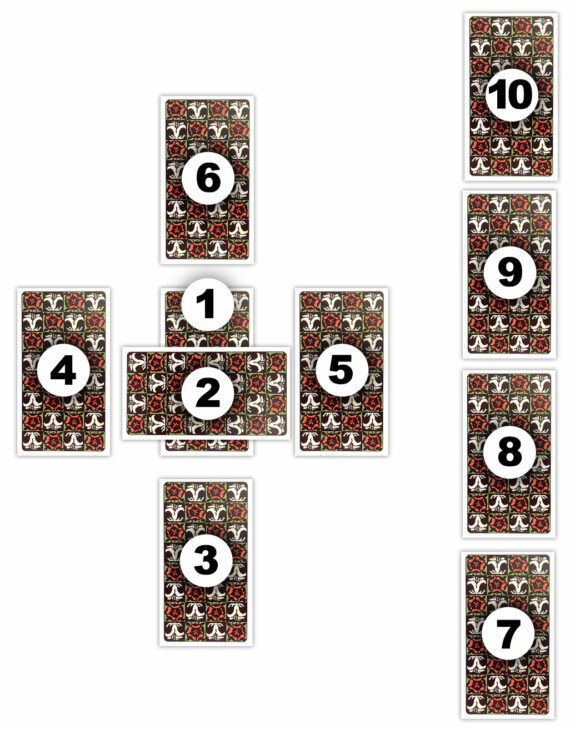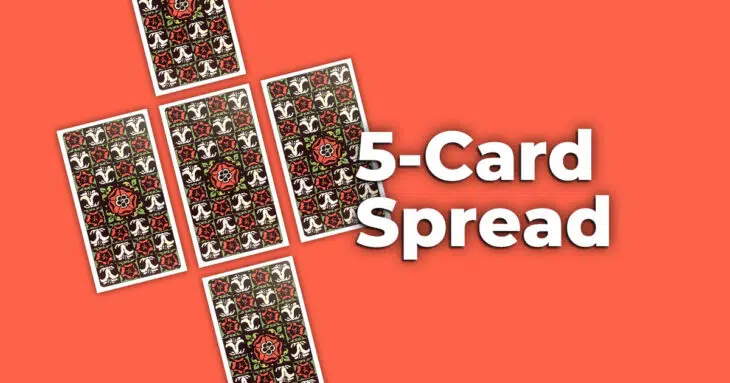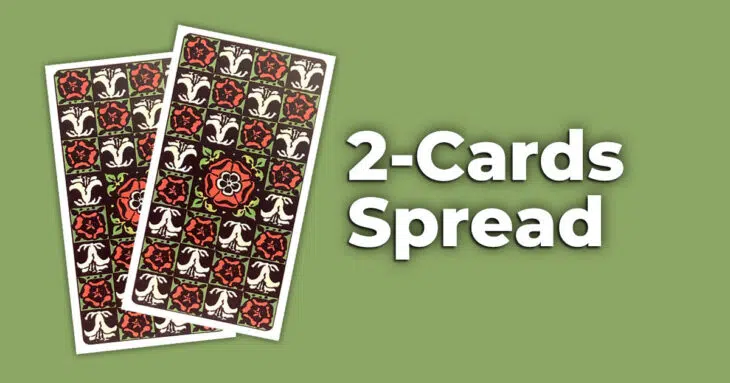Which tarot deck to choose: Rider Waite Smith or Tarot de Marseille? Comparison of the two emblematic decks.
How to make a Celtic cross spread with Tarot

The Celtic Cross reading is one of the most powerful and detailed readings in tarot. Used to answer complex questions or explore a situation in depth, it is ideal for getting a complete picture of the challenges, opportunities and energies at play. In this article, find out step-by-step how to make a Celtic Cross reading with your tarot deck.
What is the Celtic Cross Spead?
The Celtic Cross is an ancient method, often used with the Tarot de Marseille, the Rider-Waite-Smith or other traditional decks. It consists of 10 cards arranged in two distinct structures: a cross in the centre and a vertical column on the right-hand side.
This draw allows you to explore :
- The current situation
- Obstacles
- Past and future influences
- Available resources
- Advice on how to move forward
Laying down Cards for Celtic Cross Spread
Materials required for a Celtic cross spread
Before you start, make sure you have :
- A complete tarot deck (78 cards)
- A quiet space, conducive to concentration
- A clear question or a precise problem
Tip: Before drawing the cards, take a few moments to meditate on your question.
Laying out the cards: the Structure of the Spread
Here’s how to place the 10 cards of the Celtic cross spread :
Card 1: The current situation (placed in the centre): This reveals the issues related to the question posed.
Card 2: The challenge or obstacle (placed across card 1): Obstacles or challenges along the consultant’s path.
Card 3: The foundations / deep influences (placed under card 1): Bases or underlying causes of the situation.
Card 4: The recent past (to the left of card 1): Event from the past, which occurred previously, which still has consequences for the present, precursor to the current situation.
Card 5: Future influences (to the right of card 1): What will happen in the near future.
Card 6: Forces (placed above card 1): What will favour the situation.
Card 7: Your current position (bottom of the vertical column on the right): The best attitude to adopt to achieve the best possible result.
Card 8: The external environment / influences of others (placed above card 7): The external environment (people, energies, events…) that exert positive or negative influences on the situation.
Card 9: Hopes and fears (placed above 8): Hope or fear of the consultant (consider the 2 options).
Card 10: Probable outcome (placed above 9): The probable outcome of the situation.
Each card is read according to its position and its relationship to the others
Interpreting the Celtic cross spread
1. Analyse the situation and the obstacle
The first card shows the current situation. The second card, which crosses it, reveals what is blocking or supporting this situation.
2. Explore the roots and the past
The third card explains what lies at the root of the situation, while the fourth shows what happened recently.
3. Look to the future
The fifth card announces what’s about to happen. The sixth card represents your strengths and assets in achieving your goals.
4. Assess your posture and environment
Cards 7 to 9 detail your state of mind, the influence of those around you, and your hopes or fears.
5. Decipher the final result
The tenth card offers a probable vision of the outcome of the situation, based on the current dynamics.
Tips for a successful draw
- Formulate a precise question: avoid vague questions.
- Remain open: the tarot offers advice, not verdicts.
- Take your time to interpret each card without rushing.
- Use your intuition as much as your knowledge of the cards..
Conclusion
The Celtic Cross reading is an exceptional tool for getting to the bottom of complex situations. With practice and patience, it becomes an invaluable ally in helping you better understand life’s challenges and make informed decisions.
Ready to get started? Grab your tarot deck, follow this method, and let the ancient wisdom of the cards guide you!



